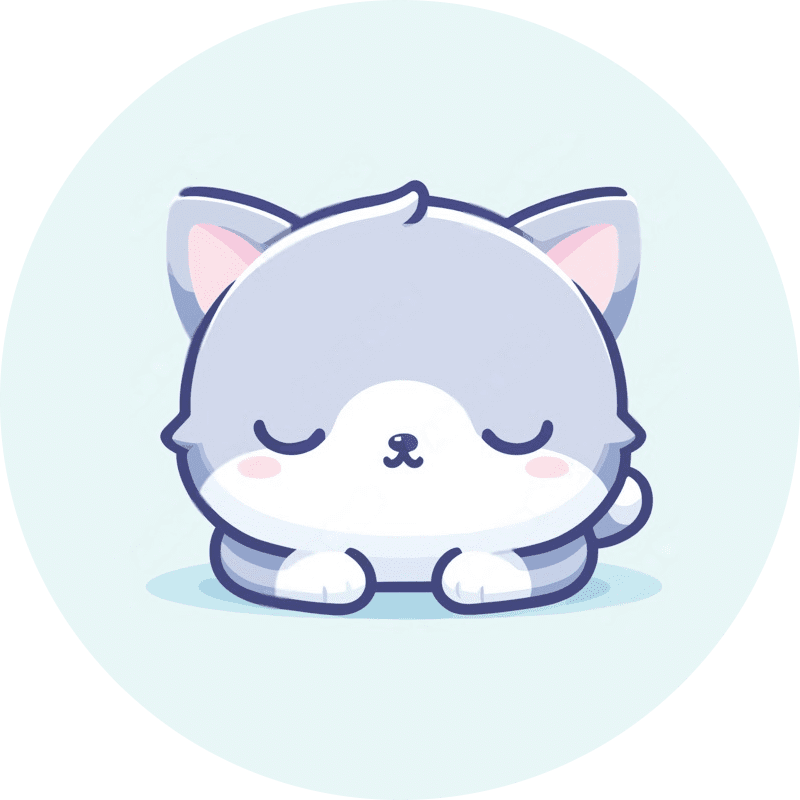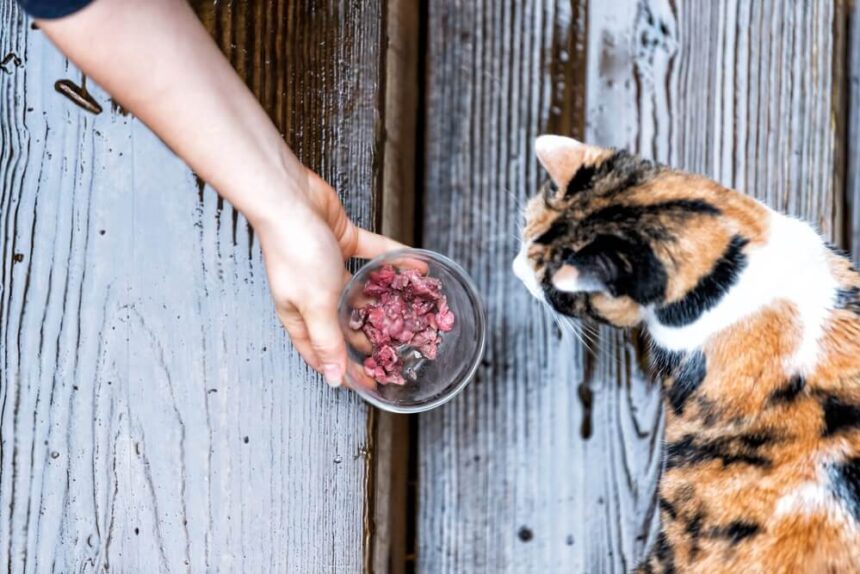So, you’re facing a bit of a conundrum, huh? Your beloved furry companion, who once happily devoured every dollop of wet food you placed before them, has suddenly turned their nose up at it. You’re left puzzled, with a half-empty can and a very finicky feline, asking yourself, “why my cat won’t eat Wet food anymore?” Fear not, dear cat parent! We’re here to shed some light on the mystery and help you coax your cat back to their old wet food-loving self.
Why My Cat Won’t Eat Wet Food Anymore?
There are a few reasons why your cat may be boycotting their once-cherished wet food. Let’s explore the possible explanations and discover ways to entice them back to their dinner plate.
1. Taste Buds on Strike
Just like us humans, cats can experience changes in their taste preferences. Maybe your cat has developed a sudden affinity for crunchy kibble or has become more discerning about the flavors they fancy. It’s possible that the wet food you’ve been offering simply doesn’t tickle their taste buds anymore.
Pro Tip: Experiment with different brands, flavors, and textures of wet food to see if your finicky eater finds a new favorite. Remember, variety is the spice of life, even for our feline friends!
2. Dental Dilemmas
A common reason for cats shying away from wet food is dental discomfort. If your furry pal is experiencing tooth pain, gum inflammation, or any other oral issues, they may find it uncomfortable to chew on moist morsels. In such cases, your cat might prefer dry food that requires less effort and doesn’t exacerbate their dental woes.
Pro Tip: Schedule a visit to your veterinarian to have your cat’s teeth and gums examined. They can help identify any underlying dental problems and recommend appropriate treatment options or dietary adjustments.
3. Environmental Factors
Believe it or not, your cat’s surroundings can influence their appetite. Changes in their environment, such as the introduction of new pets, loud noises, or even the placement of their food bowl, can stress them out. Cats are creatures of habit, and any disruptions in their routine can lead to a loss of appetite, including a sudden disdain for wet food.
Pro Tip: Try creating a calm and quiet feeding area for your cat, away from distractions and stressors. Provide a safe and comfortable space where they can dine without feeling on edge.
4. Texture Tantrums
Cats can be particular about the textures they prefer. While some felines relish the smooth consistency of wet food, others may dislike the sensation or find it unappealing. If your cat has decided to turn their back on wet food, it could simply be due to a personal aversion to the texture.
Pro Tip: Mix a small amount of wet food with their favorite dry kibble to gradually transition them back to the moist meals. Slowly increase the proportion of wet food over time, allowing your cat to adjust to the texture at their own pace.
5. Underlying Health Issues
Sometimes, cats lose their appetite for wet food due to underlying health problems. Conditions like kidney disease, diabetes, cancer, or digestive obstruction can cause a decreased appetite in cats. If your cat has been avoiding their wet food for more than a few days, it’s essential to schedule a visit to the vet for a thorough check-up.
Pro Tip: Regular veterinary check-ups can help identify and address any underlying health issues that might be affecting your cat’s appetite.
6. Dirty Bowl Woes
Cats have an incredible sense of smell, and a dirty food bowl can be a major turn-off. If their bowl isn’t kept clean, they may steer clear of it altogether. Make sure to give your cat’s food bowl a thorough cleaning every day or consider using disposable bowls that you can easily discard after each meal.
Pro Tip: Keep your cat’s food bowl clean and fresh to entice them back to their wet food.
7. Ingredient Alterations
It’s possible that the brand of wet food you’re using has made some changes to its ingredients, causing your cat to turn their nose up at it. Cats can be sensitive to even slight alterations in their food, and if the new formula doesn’t agree with them, they may refuse to eat it. In such cases, try switching to different brands or flavors of wet food until you find one that your cat enjoys.
Pro Tip: Explore different brands and flavors of wet food to find the perfect match for your cat’s discerning palate.
8. Stress and Anxiety
Stress or anxiety can have a significant impact on your cat’s appetite, causing them to become picky about their food. Changes in the home or environment can trigger anxiety in cats, leading to a refusal to eat anything unfamiliar or comforting. Creating a calm and secure environment for your cat can help alleviate their stress and encourage them to eat their wet food.
Pro Tip: Ensure your cat has a peaceful and stress-free environment to help stimulate their appetite.
9. Whisker Fatigue
Yes, whisker fatigue is a real thing! Cats rely on their sensitive whiskers to navigate their surroundings, and deep or narrow bowls can cause discomfort while eating. This discomfort, known as whisker fatigue, might make your cat avoid eating from their bowl altogether. Switching to a shallow, wide bowl can provide a more comfortable dining experience for your cat’s whiskers.
Pro Tip: Opt for shallow and wide bowls to prevent whisker fatigue and make mealtime more enjoyable for your cat.
10. Treat Spoilage
Spoiling your cat with treats or human food can sometimes make them lose interest in their regular wet food. If your cat has grown accustomed to the special treatment, they may turn their nose up at their usual meals. Consider cutting back on treats and focusing on providing a balanced and nutritious diet with high-quality wet food.
Pro Tip: Limit treats and prioritize a healthy diet with nutritious wet food to restore your cat’s appetite.
11. Food Boredom
Just like us, cats can get bored with the same food day after day. If your cat has been eating the same wet food for an extended period, it’s possible they’re craving some variety in their diet. Introduce multiple flavors and brands of wet food to add excitement and stimulate their interest in mealtime.
Pro Tip: Keep your cat’s taste buds intrigued by offering a range of flavors and brands of wet food.
How can I get my cat to eat wet food?
Now that we’ve explored the potential reasons behind your cat’s newfound disinterest in wet food, it’s time to take action and reignite their culinary passion. Here are a few tricks to entice your finicky eater back to the realm of wet food delights:
1. Start Small and Gradual
When introducing wet food to your cat, take it slow. Begin by mixing small amounts of wet food with their regular dry kibble. Over time, gradually increase the proportion of wet food until they are solely eating it. This gradual transition allows your kitty to adjust to the new taste and texture without overwhelming their palate. And remember, patience is key! Be consistent and patient as your cat adjusts to the new food.
2. Embrace Variety
Cats, just like us, enjoy a bit of variety in their meals. To keep your feline companion excited about their food, offer different flavors and textures of wet food. Experiment with a range of options to find the ones that make their taste buds dance with delight. Offer an assortment of wet food options, including different brands, flavors, and even homemade recipes. You never know what might tickle your cat’s taste buds!
3. Add Tempting Touches
To entice your cat to indulge in wet food, add some extra flavor and aroma. Consider lightly warming the wet food or incorporating a small amount of chicken broth into the dish. The gentle warmth and enticing scent will make the wet food more tempting and appealing to your kitty.
4. Warm It Up
Cats are known to be more receptive to food that’s closer to their body temperature. Place the wet food in a microwave-safe dish and gently warm it up before serving (ensure it’s not too hot!). The enhanced aroma and warmth might do the trick.
5. Savor the Smells
Cats rely heavily on their sense of smell when it comes to food preferences. Try introducing aromatic herbs or sprinkling a pinch of catnip on top of their wet food to make it more enticing.
6. Whisker-Friendly Feeding
Cats have sensitive whiskers, and using food bowls with sharp edges can cause discomfort during mealtime. Investing in a whisker-friendly bowl can make a significant difference in your cat’s mealtime satisfaction. Opt for a whisker-friendly solution like the Catit Double Stainless Steel Bowl, which provides a large, shallow design. This ensures your kitty’s whiskers don’t get irritated, making their dining experience more comfortable and enjoyable.
7. Timing Is Everything
Establish a consistent feeding schedule and stick to it. Cats are creatures of habit and thrive on routine. By feeding them at the same times each day, you create a sense of predictability and comfort.
8. Create a Calm Oasis
A calm environment is essential for your cat to fully enjoy their meals. Minimize loud noises and create a serene space for your kitty during mealtime. Eliminate potential stressors and provide a peaceful atmosphere that allows your feline friend to focus solely on their food.
9. Cleanliness is Key
Cats appreciate cleanliness, and a dirty food bowl can quickly put them off their meal. Ensure your kitty’s feeding bowl is always clean and free from any remnants of previous meals. A clean bowl will make their mealtime experience more pleasant and inviting.
FAQs
How to turn dry cat food into wet?
If you’re looking to add some moisture to your cat’s dry food, there are a few simple methods you can try. Here’s how you can turn dry cat food into a moist and enticing meal for your furry friend:
- Water Addition: Add warm water to the dry kibble and let it sit for several minutes. This will help soften the kibble and make it easier for your cat to chew and digest. Adjust the amount of water based on your cat’s preference, ensuring the food is moist but not soggy.
- Broth Infusion: Instead of water, consider using low-sodium chicken or beef broth to moisten the dry food. The flavorful broth will enhance the taste and aroma, making the meal more appealing to your cat. Pour a small amount over the kibble and give it a gentle mix.
Remember, it’s essential to monitor the food’s texture and ensure it’s suitable for your cat’s chewing abilities and overall dental health.
Why did my cat stop eating wet food they previously liked?
There are various reasons why your cat may suddenly reject wet food they previously enjoyed. Here are a few possible factors to consider:
- Flavor or Texture Changes: Manufacturers sometimes alter the formula or ingredients in wet food, leading to changes in flavor or texture. Cats can be sensitive to these modifications and may no longer find the food appealing.
- Health Concerns: If your cat abruptly stops eating wet food they used to love, it’s crucial to rule out any underlying medical issues. Consult your veterinarian to assess your cat’s health and determine if any health conditions are affecting their appetite.
Why does my cat licks food but doesn’t eat it?
Some cats may exhibit the behavior of licking their food without consuming it. This could be due to a few reasons:
- Taste Preferences: Cats, like humans, have individual taste preferences. Your cat may simply not enjoy the taste or texture of wet food and prefer the crunch of dry kibble. Respect their preference and focus on providing a well-balanced diet that they find appealing.
- Try Cat-Specific Soups: To make wet food more enticing, consider offering cat-specific soups or broths. These flavorful additions can enhance the taste and encourage your cat to eat more of the wet food.
Can cats live on wet food only?
Yes, cats can absolutely thrive on a diet of wet food alone. Wet food provides several benefits, including:
- Optimal Hydration: With its high moisture content, wet food helps keep your cat hydrated, reducing the risk of urinary tract infections and promoting overall urinary health.
- Higher Protein Levels: Wet food is often rich in protein, which is crucial for your cat’s muscle growth, maintenance, and overall well-being.
While dry food has its advantages, such as dental health benefits and convenience, a wet food diet can offer essential moisture and protein levels that contribute to your cat’s health.
Why do old cats stop eating?
Older cats may experience a decrease in appetite due to various factors. Some possible causes include dental issues, digestive problems, or underlying medical conditions like kidney disease. If your senior cat stops eating, consult your veterinarian for a thorough examination and appropriate treatment.
Is it okay if my cat only eats dry food?
In most cases, it is acceptable for a cat to solely consume dry food. Dry food provides essential nutrients and is often more budget-friendly than wet food options.
However, it’s important to recognize that a diet exclusively consisting of dry food cannot adequately fulfill a cat’s hydration needs. Cats may face the risk of dehydration if their diet lacks sufficient moisture. Thus, ensuring they have access to water and encouraging proper hydration becomes crucial.
Is it bad if my cat won’t eat wet food?
Both wet and dry food offer their own advantages and disadvantages. If your cat refuses to eat wet food, they might miss out on certain nutritional benefits that wet food provides.
It’s essential to understand that wet food typically contains higher moisture content and offers benefits like optimal hydration and increased protein levels. However, if your cat does not consume wet food, they can still maintain their health and well-being through a dry food diet.
Wrapping Up
While it can be disheartening to see your cat turn their nose up at their favorite wet food, it’s essential not to panic. With a little detective work and some trial and error, you can uncover the underlying reason behind their sudden change in appetite. Remember, patience and persistence are key when it comes to coaxing your finicky feline back to the wet food side. So, gear up, get creative, and let the enticing aroma of wet food reignite the spark in your beloved whiskered companion’s mealtime adventures!




